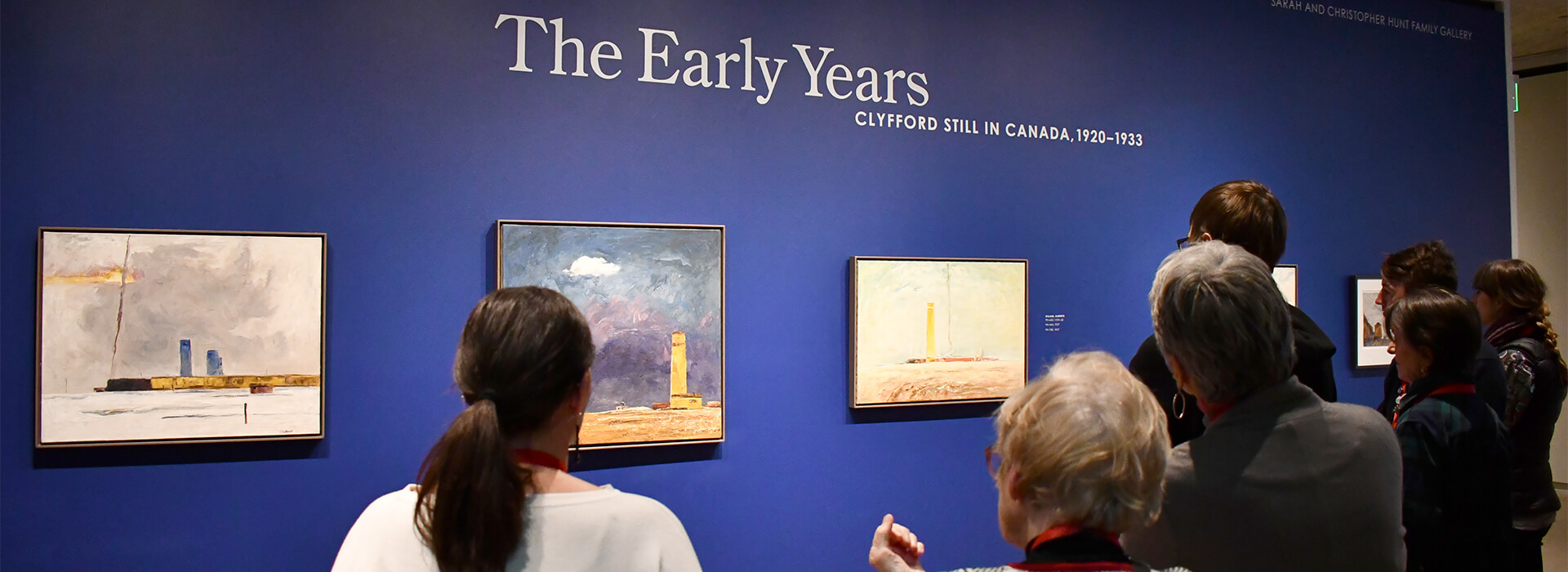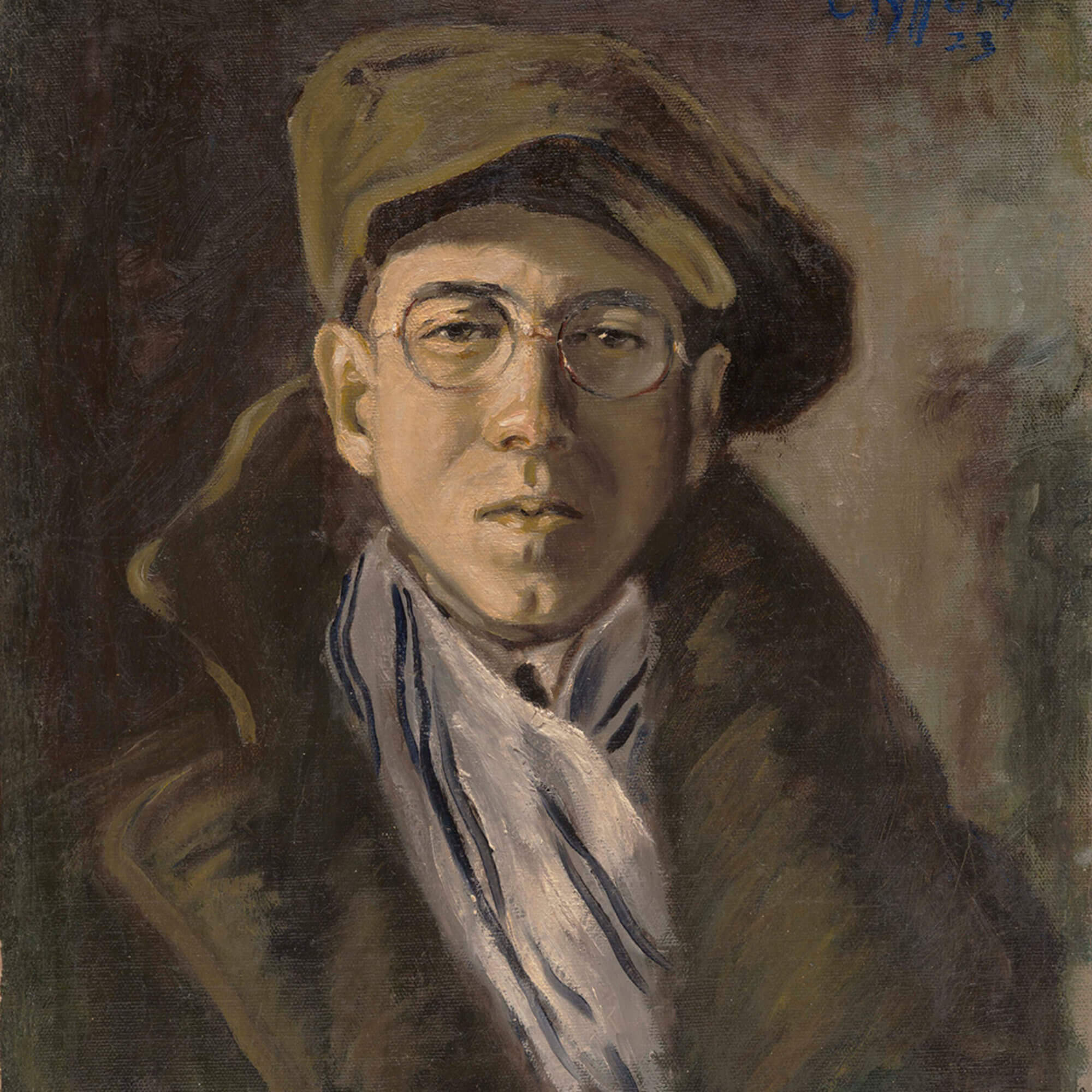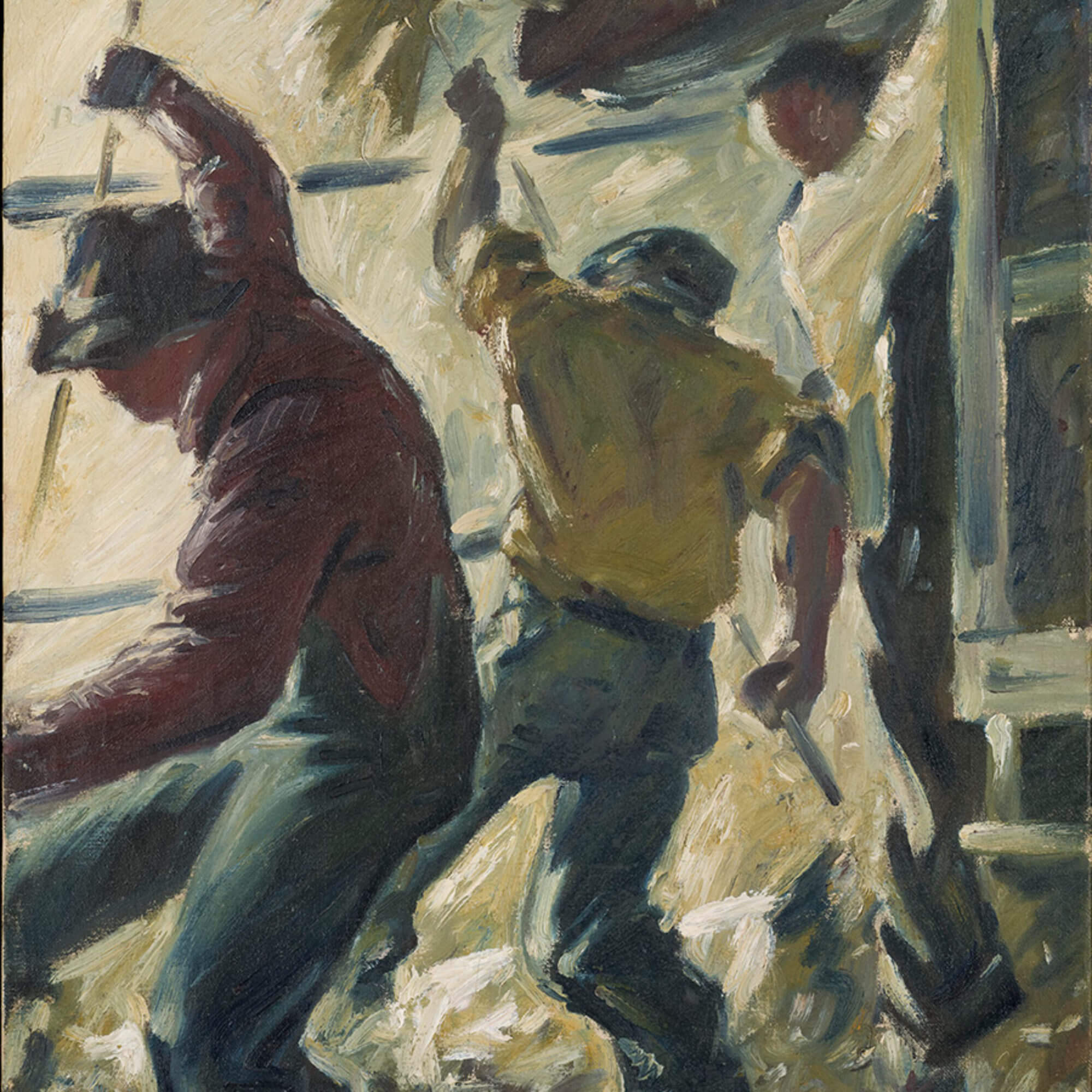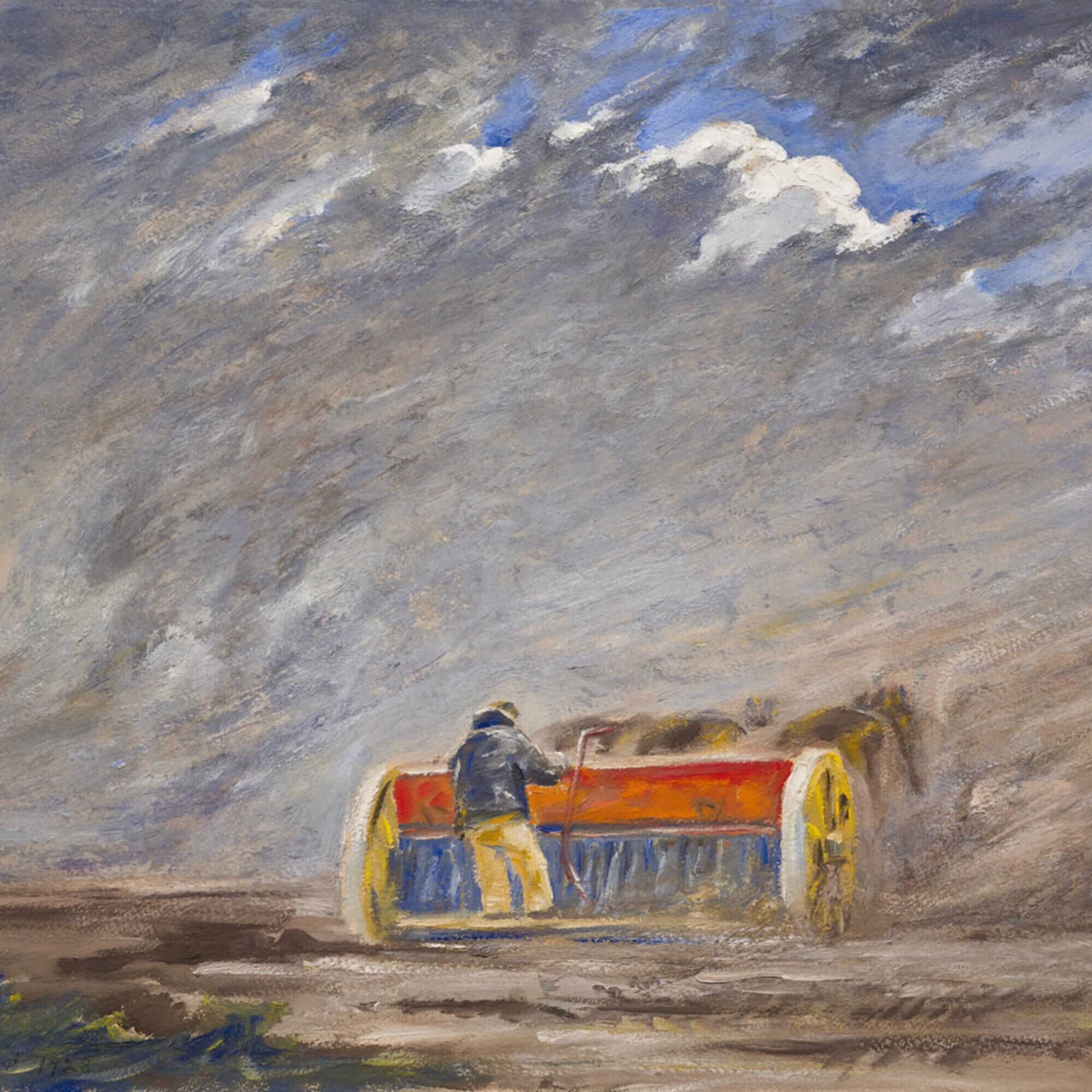This exhibition is the third installment in an exhibition series featuring Still’s earliest works and curated by guest curator, Patricia Failing. Situated in the Museum’s first three galleries, The Early Years: Clyfford Still in Canada, 1920–33 illustrates the early development and legacy of Still’s artistic practices in two distinctive geographical settings, Bow Island (1920–25) and Killam, Alberta (1925–33).
Nearly all of Still’s work from Bow Island, aside from portraits, represents the area’s seasonal prairie environment. Severe droughts, harsh winters and abrupt shifts in weather conditions were typical in this inhospitable dry belt. Allusions to these hardships, however, are notably absent from Still’s sunny Bow Island landscapes, sketches of plants and animals, and atmospheric color studies.
In 1925, Still’s family moved 230 miles north to Killam, Alberta, where farming conditions were more promising. Like his practice in Bow Island, Still’s Killam paintings and drawings concentrate on the landscape around the family farm. However, his interest in this subject shifted after the move north. In his Killam works, grain elevators and other structures are treated as shafts of atmospheric colored light penetrating long, horizontal stretches of sky. Still also begins to brighten his color palette, focus his railroad imagery more on the grain trading economy, and depict the labor of human figures. Despite environmental contrasts and the relative sophistication of Still’s work of the later 1920s, both his Bow Island and Killam images convey youthful lived experience in a familiar and comfortable environment—standing apart from Still’s later preoccupation with the uncanny and sublime.
The exhibition concludes with some of Still’s later, mature abstractions, which Still emphasized, “have nothing to do with the prairie.” Yet, Still’s daughter, Sandra, observed that her father “came out of the flats of Alberta…and would not have made his paintings of the 1970s especially, I think, if he had grown up in the city.” A selection of Still’s work on view in the exhibition’s third gallery suggests this heritage she had in mind.
Remaining galleries included collection highlights.
Listen to this audio experience to hear poet Andy Cushen and painter Jennifer Davey share their personal interpretations of paintings in the galleries. Explore this exhibition anytime on our Virtual Exhibitions page.




